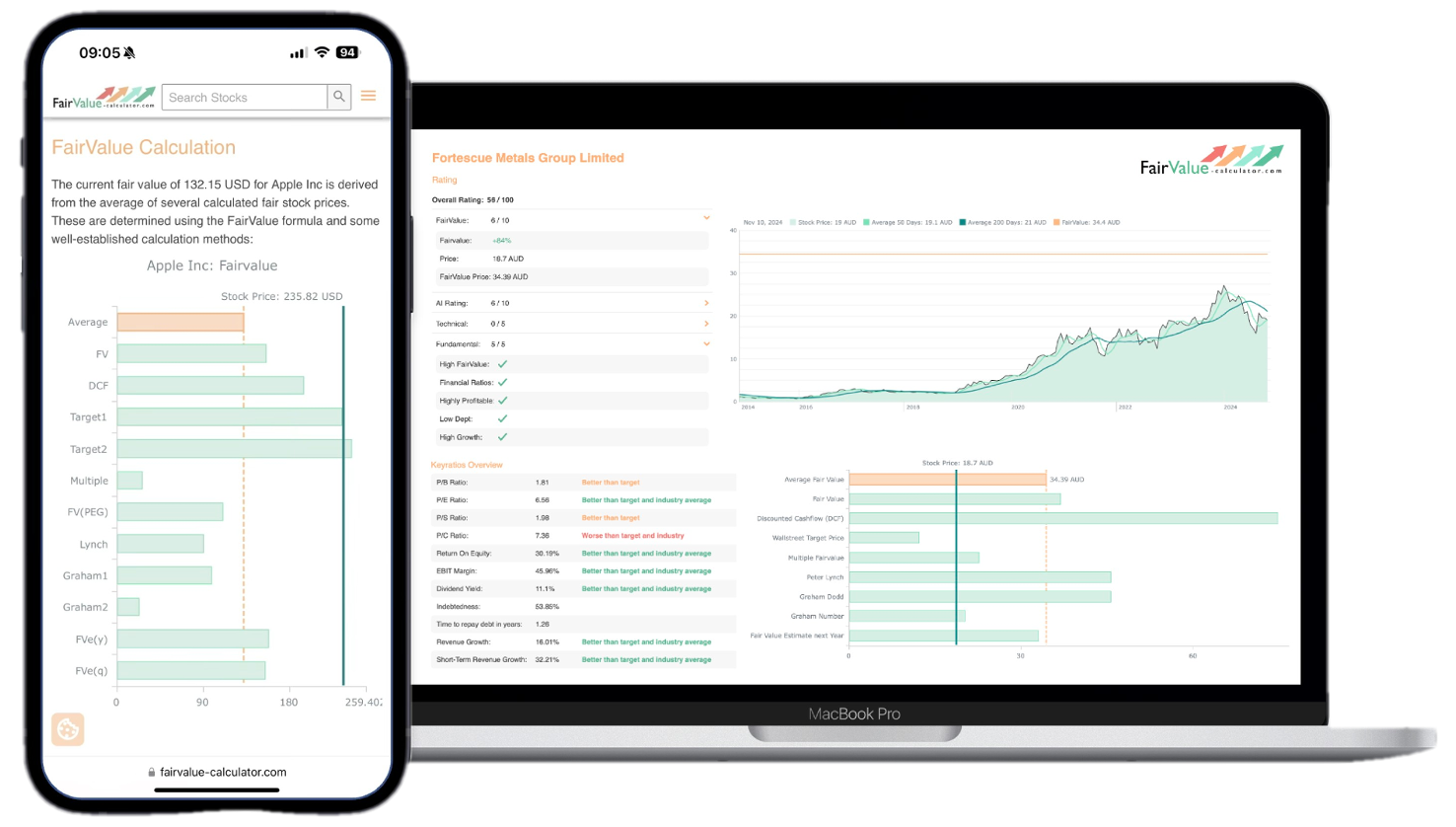Navigating the financial landscape can often feel like deciphering a complex code, especially for private investors aiming to maximize their returns. The ability to calculate return on shareholders’ equity is a pivotal skill in this journey, offering a clear window into a company’s profitability and efficiency in generating earnings from equity investments. Yet, this crucial metric remains misunderstood and underutilized by many. By understanding its formula and components, you gain the power to make informed decisions that can drive substantial financial success.
Imagine assessing two companies with the same net income, yet discovering one is far superior in rewarding shareholders simply through a nuanced calculation of shareholders equity. This blog post will take you on an informative journey, breaking down each step in calculating return on shareholders’ equity. Armed with this knowledge, you’ll uncover common pitfalls investors face and transform how you evaluate potential investments. Dive in to enhance your financial acumen and use these insights to make sound, strategic choices for your portfolio’s growth.
💡 Discover Powerful Investing Tools
Stop guessing – start investing with confidence. Our Fair Value Stock Calculators help you uncover hidden value in stocks using time-tested methods like Discounted Cash Flow (DCF), Benjamin Graham’s valuation principles, Peter Lynch’s PEG ratio, and our own AI-powered Super Fair Value formula. Designed for clarity, speed, and precision, these tools turn complex valuation models into simple, actionable insights – even for beginners.
Learn More About the Tools →Importance of Return on Shareholders’ Equity in Financial Analysis
Return on shareholders’ equity (ROE) is a cornerstone metric in financial analysis, acting as a barometer of how effectively a company is using investor capital to generate profits. When you calculate return on shareholders equity, you essentially measure the return earned for each dollar of shareholders equity invested. Investors rely on ROE to compare firms across industries, gauge management efficiency, and identify potential growth opportunities. A consistently high ROE suggests that a company can reinvest earnings at attractive rates of return, signaling sound management and robust competitive positioning.
For private investors and finance enthusiasts, ROE offers clarity amid overwhelming financial data. It cuts through the noise of revenue growth, cost structures, and debt levels to focus on the bottom line relative to shareholders equity. By integrating ROE into your analysis toolkit, you gain an advantage in spotting high-quality businesses that turn shareholders equity into sustainable profits. This focus can ultimately help you allocate capital more wisely, build a resilient portfolio, and drive long-term wealth creation.
🚀 Test the Fair Value Calculator Now!
Find out in seconds whether your stock is truly undervalued or overpriced – based on fundamentals and future growth.
Try it for Free →
Understanding the Fundamentals of Shareholders’ Equity
Shareholders’ equity represents the residual interest in a company’s assets after deducting liabilities. It is the amount attributable to shareholders if the company were liquidated today. On a balance sheet, shareholders’ equity consists of items such as common stock, additional paid-in capital, retained earnings, and sometimes accumulated other comprehensive income. Together, these components provide a snapshot of the book value of shareholders equity invested by owners.
Understanding shareholders’ equity is critical when you calculate return on shareholders equity. Equity serves as the denominator in the ROE formula, making its accurate determination essential to meaningful results. Equity can fluctuate for reasons such as net income retention, dividend distributions, share repurchases, or new equity issuance. When analyzing ROE trends, ensure you account for these changes over time to avoid misinterpreting a company’s profitability trajectory.
Explore our most popular stock fair value calculators to find opportunities where the market price is lower than the true value.
- Peter Lynch Fair Value – Combines growth with valuation using the PEG ratio. A favorite among growth investors.
- Buffett Intrinsic Value Calculator – Based on Warren Buffett’s long-term DCF approach to determine business value.
- Buffett Fair Value Model – Simplified version of his logic with margin of safety baked in.
- Graham & Dodd Fair Value – Uses conservative earnings-based valuation from classic value investing theory.
- Intrinsic vs. Extrinsic Value – Learn the core difference between what a company’s really worth and what others pay.
- Intrinsic Value Calculator – A general tool to estimate the true value of a stock, based on earnings potential.
- Fama-French Model – For advanced users: Quantifies expected return using size, value and market risk.
- Discount Rate Calculator – Helps estimate the proper rate to use in any DCF-based valuation model.
Calculating Return on Shareholders’ Equity: Formula Overview
At its core, ROE is simple: it divides net income by average shareholders’ equity. However, clarity on each part of the formula is key to precise calculations. The formula reads:
ROE = (Net Income) / (Average Shareholders’ Equity)
This ratio expresses earnings generated per dollar of shareholders’ equity as a percentage. When you calculate return on shareholders equity using this formula, you normalize profit relative to the capital base, enabling apples-to-apples comparisons across firms of different sizes and capital structures.
Step Net Income Calculation
Accurate net income figures are the foundation of any ROE calculation. Net income appears at the bottom of the income statement and reflects revenues minus expenses, taxes, and interest. When you calculate return on shareholders equity, using the most recent fiscal year’s net income is common, but you may also use a trailing twelve-month net income for more current insights.
Be mindful of one-time items or extraordinary gains and losses. Adjusting net income for unusual events—such as asset sales, legal settlements, or restructuring charges—yields a normalized figure that better captures ongoing operational profitability. This adjusted net income will provide a more reliable basis when comparing ROE across multiple periods or peers, as it relates directly to shareholders equity.
Step Shareholders’ Equity Determination
Determining shareholders’ equity requires extracting data from the balance sheet at two points: the beginning and end of the period. Calculate average shareholders equity by adding the starting and ending equity balances, then dividing by two. This smooths out intra-year fluctuations due to dividend payments or share issuances.
Ensure consistency in your equity base. If a company reports preferred equity separately, decide whether to include or exclude it based on your analysis goals. Most retail investors focus exclusively on common equity, but analysts may incorporate preferred equity when assessing returns for all shareholders equity.
Step Putting It All Together – Return on Shareholders’ Equity Calculation
With net income and average shareholders equity in hand, plug the numbers into the ROE formula. For example, if net income is $10 million and average shareholders equity is $50 million, then ROE = 10M / 50M = 0.20, or 20%. This means the company generated a 20% return on every dollar of shareholders equity invested during the period.
When you calculate return on shareholders equity, express the result as a percentage for easy comparison. Document your inputs—net income adjustments, equity averaging assumptions—to ensure transparency and reproducibility in your analysis.
Interpreting Return on Shareholders’ Equity Results
A single ROE figure offers limited insight without context. Compare your calculated ROE to historical values, peer group averages, and industry benchmarks. A rising ROE trend suggests improving profitability or smarter capital allocation, while a declining trend warns of potential business or competitive challenges.
High ROE can signal strength, but excessively high values—say above 30%—might indicate aggressive financial leverage or short-lived profit spikes. Conversely, a moderate ROE in steady-growth industries could still denote a healthy business. Always dig into the drivers behind the ratio to make informed judgments rather than relying on absolute thresholds when considering shareholders equity.
Common Pitfalls to Avoid in Analyzing Return on Shareholders’ Equity
Several pitfalls can distort your ROE analysis if unchecked. One is failing to adjust net income for non-recurring items, which can inflate earnings and overstate ROE. Another is overlooking changes in shareholders equity due to share buybacks or issuances, which affect the average equity denominator.
Additionally, companies can manipulate ROE through financial engineering, such as excessive debt or aggressive share repurchases. Remember that ROE does not account for risk or capital structure differences. Always pair ROE with other metrics—like debt-to-equity or return on invested capital—to gain a balanced view of shareholders equity.
Practical Applications of Return on Shareholders’ Equity
ROE is a versatile tool for investors. Use it to screen for high-quality companies with sustainable profitability. When comparing firms, look for those with consistently above-average ROE and stable growth in shareholders equity. This indicates management’s ability to reinvest earnings at attractive rates.
ROE also guides valuation and portfolio allocation decisions. High-ROE companies often command premium valuations, reflecting market confidence in their long-term earning power. Including ROE analysis in your investment process helps you build a portfolio of businesses that generate strong returns on the shareholders equity you commit.
Conclusion: Leveraging Return on Shareholders’ Equity for Informed Investment Decisions
Why is Return on Equity (ROE) an important metric for investors to consider? ROE reveals how efficiently a company is using shareholders’ equity to generate profits, making it a crucial indicator of financial performance and managerial effectiveness.
How can investors calculate Return on Equity (ROE) for a company? ROE is calculated by dividing a company’s net income by its average shareholders’ equity, providing insight into the profitability of the business relative to the shareholders equity invested.
What does a high Return on Equity (ROE) signal about a company? A high ROE indicates that a company is effectively generating profits from shareholders’ equity, suggesting strong management and potential for favorable investment returns.
How does Return on Equity (ROE) analysis help in building an investment portfolio? By incorporating ROE analysis into the investment process, investors can select companies that demonstrate strong returns on shareholders equity, enhancing the overall quality and performance of their portfolio.
In addition to Return on Equity (ROE), what other factors should investors consider when making investment decisions? Investors should evaluate ROE in conjunction with other financial ratios, industry benchmarks, and market trends to make informed and well-rounded investment choices that align with their financial goals related to shareholders equity.







